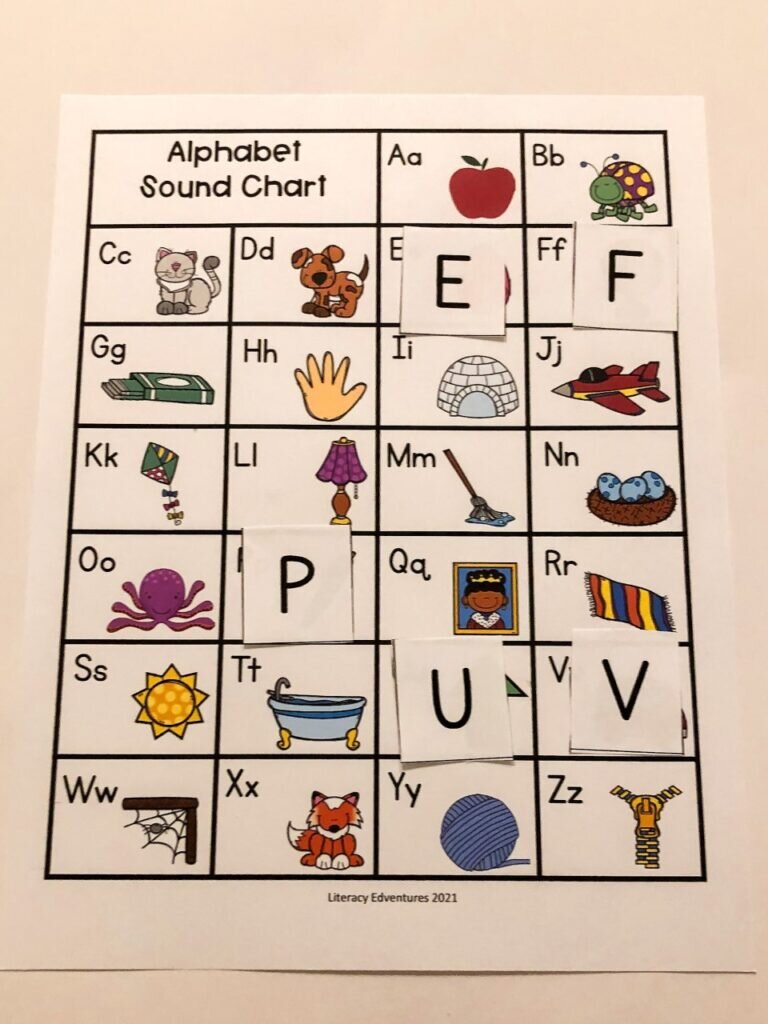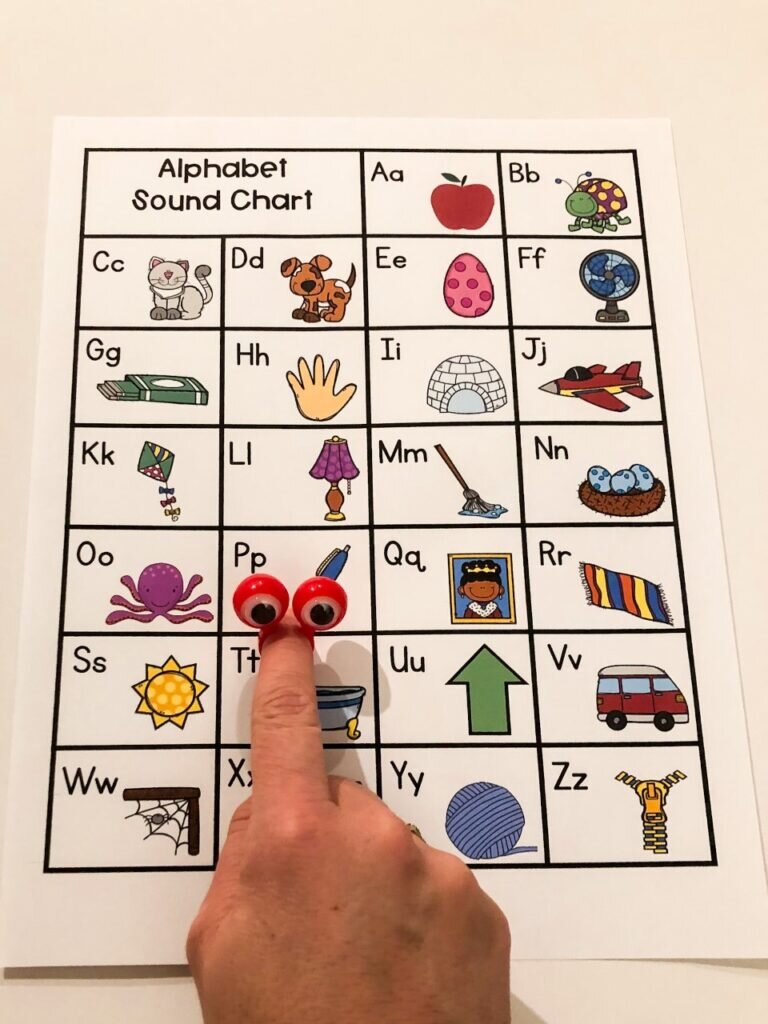Five Ways to Use an Alphabet Chart
Using an alphabet chart in your room as a warm-up can set you up for success! I recently shared how these alphabet letter charts can differ greatly. This makes choosing the best one for your kiddos hard. I am going to give you a break down on why choosing an appropriate one is so important. I will also show you my favorite linking chart activities! Don't forget to download your alphabet chart free printable at the end of this post.
When choosing or creating alphabet letter charts for your students, it is important to keep a few things in mind.
Look for simple easy to say pictures. The pictures should be no more than 1-2 syllable words and they should be pictures the students are familiar with. Remember, the purpose of using an alphabet chart is for students to understand the letter and sounds. We can save the vocabulary lesson for another time.
Avoid words with initial blends. While blends make two separate sounds, they often roll off our tongue as ONE. For example, say "grape" now say "goat" which gives you the TRUE /g/ sound? goat.
Let's talk about X- How many words do our students read in kindergarten and first grade that the /x/ actually makes the /z/ sound? Nearly.....NONE! So why are our alphabets and linking charts in kindergarten and first grade plastered with XYLOPHONE? Ya feel me? It would be much easier to choose a picture that has the final sound of /ks/ and explain that, rather than teaching them that x says "z" am I right?
Now that I have given you some food for thought, let's talk about how to use these alphabet charts in your small group. Each of the activities that I am going to share will take less than 2 minutes to complete.
Activity #1
Use a fun pointer to make it more engaging
Say the letter, sound, and word. Ask students to point to each letter, sound and word as you chorally read the alphabet chart. Throw in a fun pointer to boost engagement. It will sound something like this. A /a/ apple, B /b/ bug, C /c/ cat.
Activity #2
Use letter tiles or magnetic letters
Match the letter or sound. Give each student a couple of magnetic letters and ask them to find the corresponding letter on the alphabet chart. Once they find it, ask them to place it on top.
Activity #3
Use sticky notes to cover mystery letters
What's the mystery letter/sound? Prior to the small group, use a sticky note to cover the letter/sound. Ask students to recite the alphabet and see if they can figure out what the mystery letters are.
Activity #4
Use fun chips or mini erasers to cover letters and sounds
Cover my letter or sound. Give each student a handful of chips or erasers. Call out a letter and ask them to cover that letter with their chip.
Activity #5
Use google eyes, wands, or witch fingers
Close your eyes and pick a letter. Give each student a wand, witch finger, or magnifying glass. Ask them to close their eyes and put their pointer on a letter. When they open their eyes, ask them to say the letter and sound they are pointing to.
I hope that you found these activities helpful. The more familiar students are with manipulating the alphabet, the faster they will learn it. As always, I try to make activities that are fun and engaging, click here for some low prep ideas! If you are interested in more activities like this, click the links below.
Resources:






